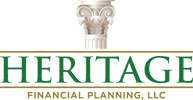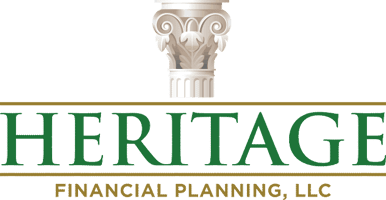If you can’t wait for 2020 to be over, you’re certainly not alone. But don’t let the myriad terrible things about the year distract you from taking care of important end-of-year financial moves. We’ve all been guilty of falling short on the plans and promises we made for what we’d accomplish while locked down, but the good news is that when it comes to your financial checklist, there’s still time left to make sure that your money is working its hardest for you.
Not sure where to start? Here are four of the most important things you can do to make sure you’re in the strongest possible financial position as you head into 2021.
- Have extra cash on hand? Use it to your benefit!
The economic news has reported that those who have been able to continue working in 2020 have actually increased their savings this year. There are lots of reasons for this: We’re not spending money on commuting, on lunches out, on dry cleaning and work clothing, or on vacations. If you’ve found yourself with an excess of cash, now’s the time to make it work for you by doing any or all of the following:
- Make sure that your emergency cash account is fully funded.
- Max out your retirement account. Whether you have a 401(k), a 403 (b), or an IRA, if you haven’t reached the 2020 limits then put some of your extra cash in there. There’s an especially big incentive for those who turned fifty this year — you can exceed the limit by $6,500 as a way to catch-up on contributions.
- Take advantage of your brokerage account to invest your excess money.
- If you want to convert a Roth IRA, use the cash to cover the tax.
- If you’re a homeowner, check to see whether you’ll benefit by refinancing your mortgage.
- If you carry high-cost debt or student loans, pay them down (or off).
- If you are self-employed or earn 1099-NEC income, you can put your extra cash into a SEP IRA or Solo 401(k) to lower your tax liability while simultaneously saving.
- Take advantage of the open enrollment period to review your current selections
As 2021 approaches, employees find themselves in the period known as open enrollment, when they can make changes to their benefit elections and their health insurance coverage. As tempting as it is to simply leave things as they are, there’s a good chance that you can make adjustments that will put you in a better economic position. If you’re paying for coverage that you’re not using or not taking advantage of options that provide you with tax advantages, set aside some time to review while you still have a chance. Here are the things to pay closest attention to:
- Life Insurance Coverage – Many companies provide life insurance to their workers up to a certain amount of coverage for free, while others offer it as a box to check as though the rates being offered are competitive. The truth is that you may be paying too much, and it’s a good idea to check. It’s easy to get a quote on a private policy from the countless insurance companies that offer online quotes. Determine what coverage you need and for how long and then price it out. If you find a better deal, then drop the one from your employer, but not until after you’re sure that your new policy is in effect.
- Pre-tax benefits — Many companies offer pre-tax benefits like transportation vouchers or parking that were great while you were commuting, but not necessary for those who anticipate working from home for the long term. If you’re paying for any of those options, it’s probably a good idea to discontinue that benefit.
- Health insurance — It is never a good idea to just let your health insurance benefits stand without looking at how you are using them and whether that is likely to change. If you are in good health and not really using the coverage you might want to switch to a plan that offers greater savings, or if you’ve used it more frequently then you thought you would it might be time to switch out of the plan that you last chose to one with a lower deductible.
- Flexible spending accounts – These are valuable benefits because of the savings you can realize through pre-tax contributions, but only if you are making good use of it. You also want to check before the end of the year to see whether your plan allows any money left in your flexible spending account to be rolled over. If it can’t be, then you need to figure out how to spend it before the year is over, or else you’re just throwing money away.
- Check your retirement plan contribution levels while there is still time. Though the contribution limits for 2021 haven’t changed, the amount that you feel comfortable contributing may have.
- Revisit your current and previous 401(k) accounts
For many employees, 401(k) accounts with matching contributions have become an expected benefit, and once they’ve set them up, they tend to forget about them. But even though your 401(k) feels like an auto-pilot type of investment, you still need to monitor the amount that you’re contributing to make sure that you’re maximizing its benefit. It’s also important to take care of accounts you may have left behind when you left a previous job.
- It makes sense to contribute as much as you’re allowed to each year, but remember that the way your employer matches your contribution might mean that putting in too much early in the year could have you maxing out early. It may not seem to make a difference, but if your company matches each contribution it might make more sense to reduce your contribution to spread it out throughout the year so that your employer chips in more.
- If you’re maxing out your 401(k) early and still want tax and savings advantages, a Roth 401(k) option may be a smart addition.
- When you set up your 401(k), you selected an investment type that suited your needs – and those needs may have shifted. If your life and priorities have changed, take a look at the portfolio offerings your 401(k) administer offers to see if you need to switch to a different level of risk. Some options include target-date funds and brokerage windows.
- And speaking of life changes, it’s always a good idea to review your beneficiary designations. It is easy in the emotional rush of a divorce, a birth, a death or similar event to forget about these accounts.
- Finally, you need to look into the 401(k) or 403(b) accounts that you left behind when you left your last job or jobs. Though they are safe where they are, it’s usually a good idea to roll it over into an IRA or look into what your other options may be.
- Rebalance and diversify to maximize your profits, risk, and tax position
One of the most essential end-of-year economic tasks involves rebalancing, reallocation, and diversification. It’s the best way to free yourself of items that are weighing you down and look for better opportunities. If you investigate each of the following aspects of your portfolio at the same time, you’ll put yourself in an optimal position from a tax perspective.
- Cut your losses through tax-loss harvesting.
When you have an investment that is consistently losing money and dragging your portfolio down, it’s time for tax-loss harvesting. Tax-loss harvesting describes taking losses to offset tax liability by selling off losing investments. Though the tax laws limit the use of losses to reduce income or capital gains to no more than $3,000, any losses over that amount can be carried over in future years until they’ve been exhausted.
- Bring your portfolio back into balance
Any action that impacts your goals for asset allocation — including tax-loss harvesting —will need to be carefully considered and may require additional investments to bring your portfolio back to the original investment balance that you created for yourself. This process is known as rebalancing, and it is essential to maintaining the level of risk with which you are comfortable. As your life changes, so too will your risk tolerance and priorities, and you may find different asset classes more or less appealing or more or less successful. This is why an annual review is so important and can be so powerful. It allows you to weigh your options, improve performance, and reestablish what your current and anticipated needs are.
- Sell employer stocks and other concentrated stock positions
As appealing as employer stocks may be, they can also lead to an overweighting in a particular position and an unreal sense of your individual wealth (for better or worse) depending upon the market’s impact in the company’s stock price. By using the end of the year to sell, you can quickly address any gains realized over two tax years.
- Be mindful of end-of-year distributions
Many managed mutual funds distribute dividends and capital gains at the end of the year, and these can be reportable for tax purposes unless you sell them before the ex-date.
Don’t try going it alone
While this list of end-of-year tasks can be helpful, it can also be overwhelming, especially if you aren’t confident in your own knowledge of tax strategies. Heritage Financial Planning can help you alleviate your own anxiety and make sure that everything that needs to be addressed will be. If you have any questions or you would like to schedule a meeting, give us a call at our office at (574) 606-4406.












